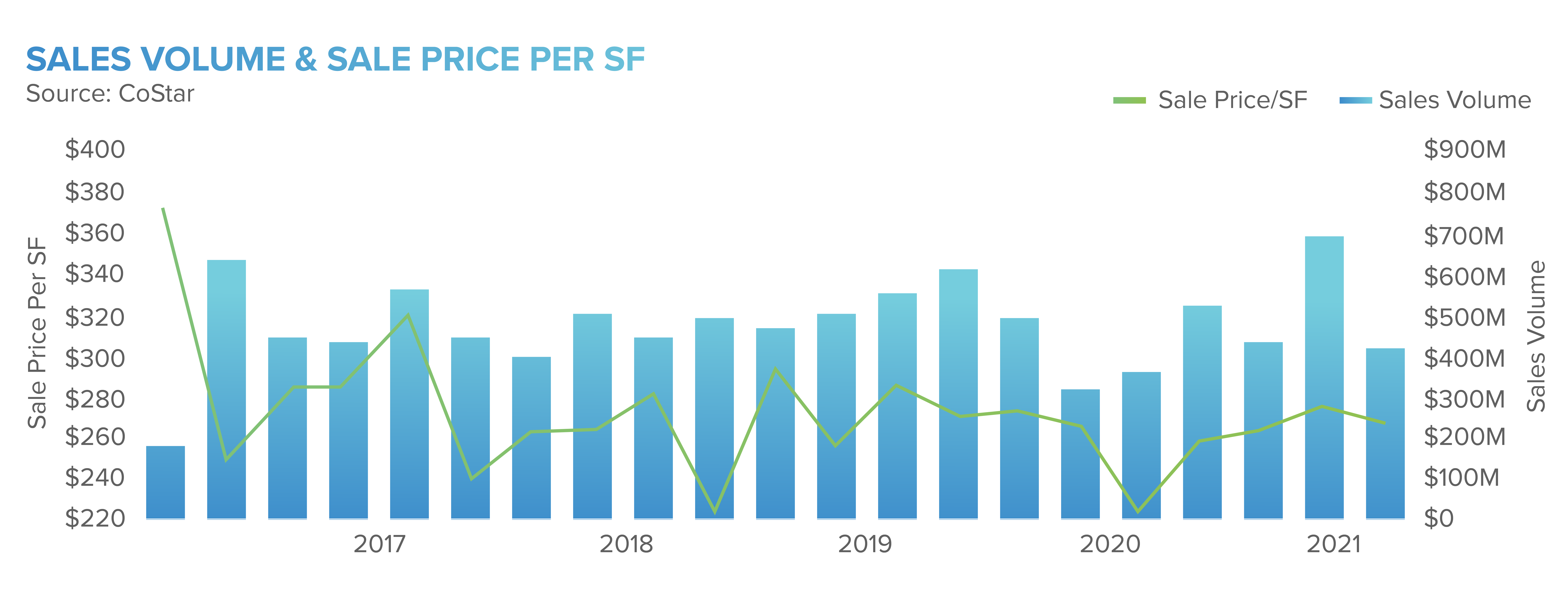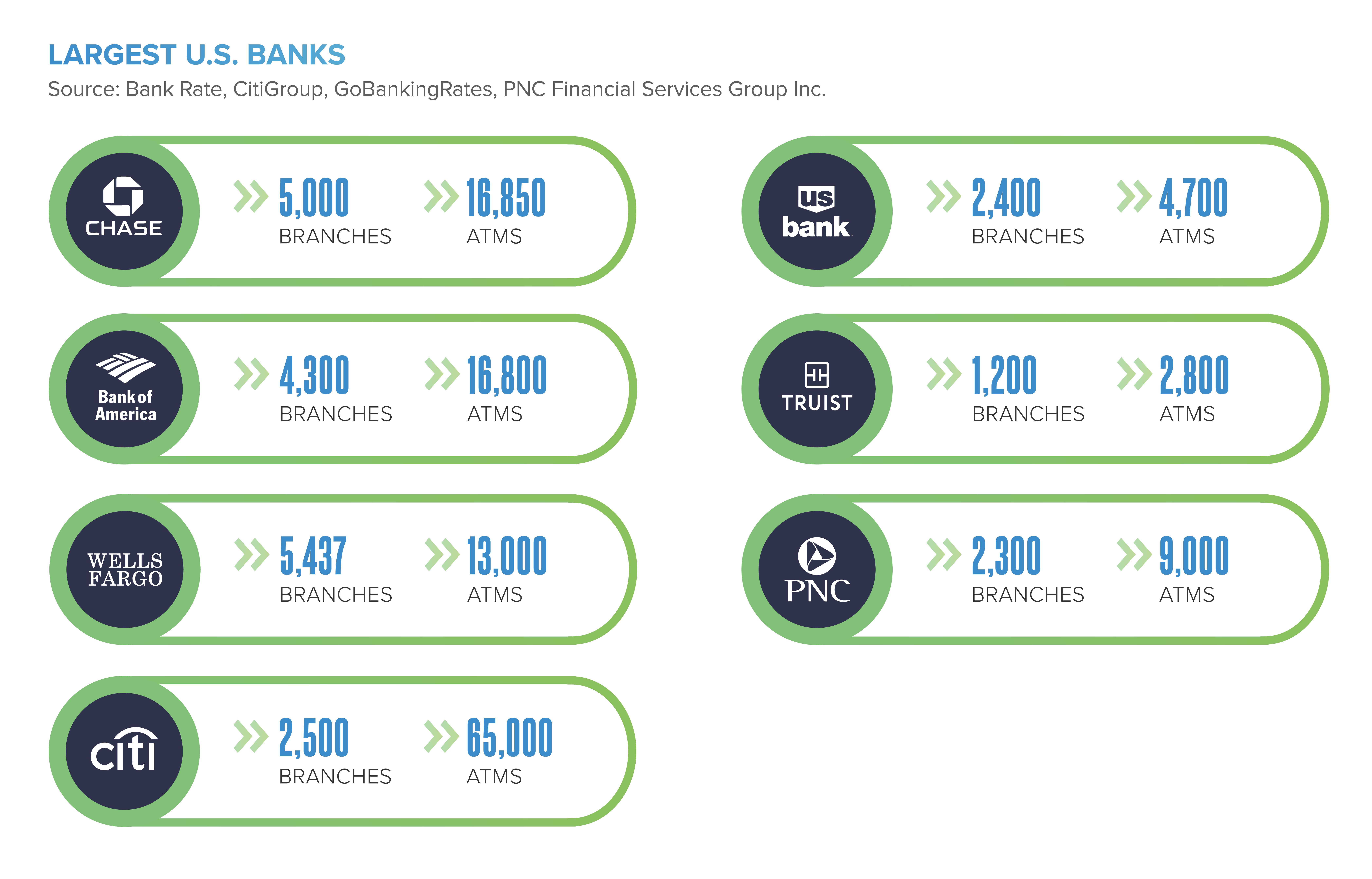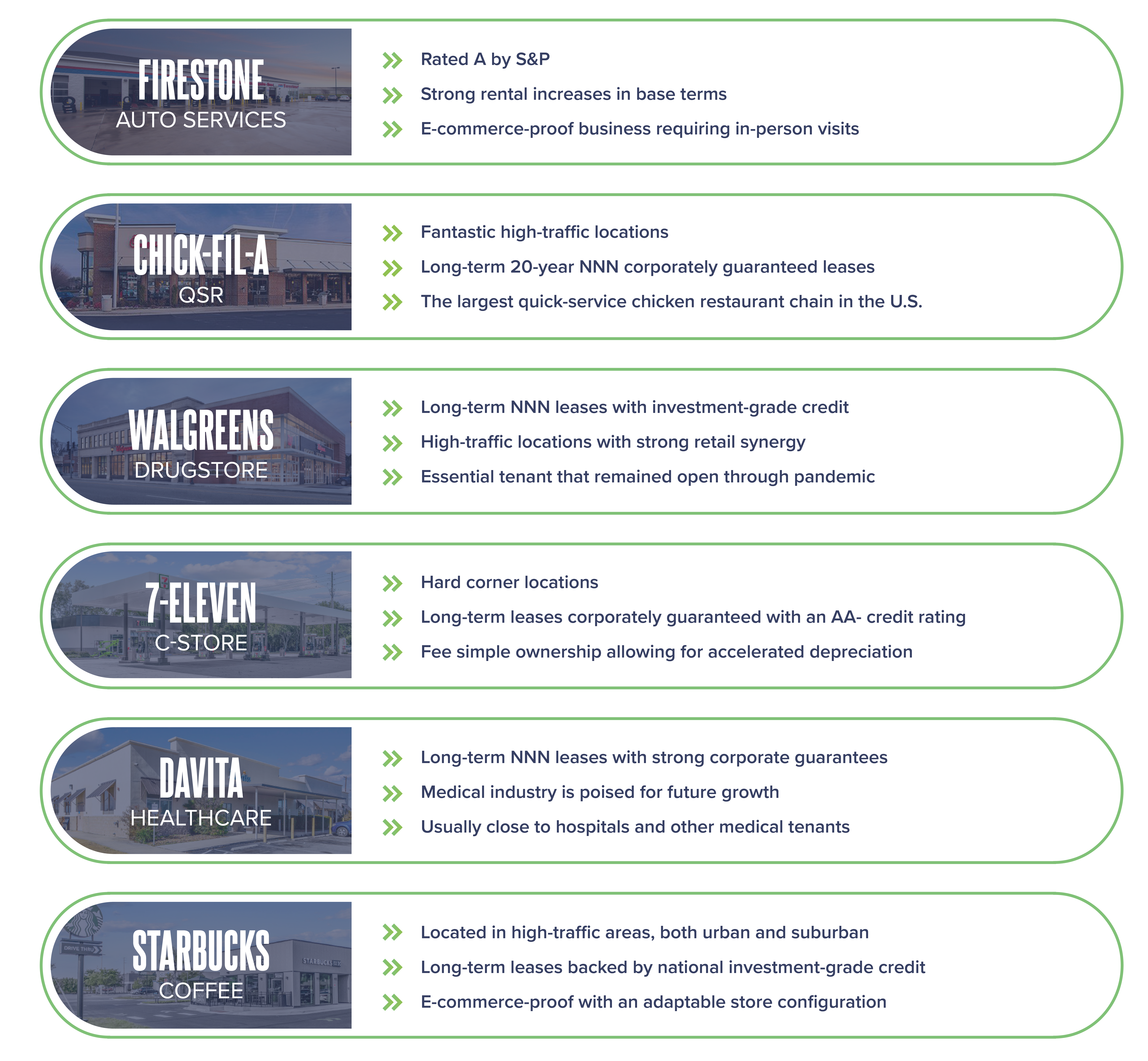
Historically, retail banks were the golden standard for net lease investors, boasting long-term leases, investment-grade tenants, and passive management. Now, the momentum backing online banking has investors concerned for retail banks in the next ten to 15 years. The recent narrative around banks has focused on branch closures and consolidation, but bank branches are decades away from becoming obsolete, according to Jamie Warder, Executive Vice President and the Head of Digital Banking at KeyBank. Instead, the future of the consumer banking experience will be a conglomerate of physical and digital resources. In this article, Matthews™ discusses how banks navigate and adapt in a digital environment and what this means for commercial real estate investors.
Overview
Retail banks offer financial services for the general public ranging from everyday spending to life events, such as buying a car. As the economy progresses to a cashless society through online banking, the fate of a bank’s physical presence will be redundant and unnecessary.

The 15 largest banks now hold a combined total of $12.82 trillion of assets, as of March 21, 2021. Source: Bank Rate

Consumer Trends Transforming the Industry
Millions of Americans were already using digital banking for financial transactions, but COVID-19 forced resistant customers to embrace it, pressuring retail banks to invest in technology.
The market for mobile banking is expected to generate $693 billion in revenue from downloads by the end of 2021. Source: DataProt
The KeyBank 2020 Financial Resiliency Survey found that 85 percent of Americans used a digital tool to complete some or all financial transactions after the onset of the pandemic. According to DataProt, the total value of payments made using a mobile device reached $503 billion in 2020.
Bank branch traffic is declining, so financial institutions are upping their transaction convenience and efficiency with 24/7 ATM drive-thrus and Interactive Teller Machines (ITMs), which are essentially ATMs with live video chat features that connect to a teller. This technology, along with COVID-19, has revitalized drive-up banking, making transactions quicker and easier for customers.
However, the demand for in-person banking is still there. A goMoxie survey revealed that 62 percent of customers prefer banks to have a physical presence rather than a digital-only presence. Some services are still necessary to conduct in-person, like notary services and accessing safe deposit boxes. Bank employees will be repurposed from one-time transactional visits with clients, like cashing checks or opening bank accounts, to value-based and higher-level services, like mortgages or car loans. These services allow for deeper conversations about financial health rather than a surface-level exchange, further strengthening relationships with customers.
Branch Consolidation
According to S&P Global Market Intelligence data, 3,324 U.S. bank branches closed in 2020. From June 2020 to 2021, banks have closed a total of 4,511 branches and opened 1,122. Bankers are more pessimistic on the outlook for the branch-based banking model.
Local bank and credit union executives are more optimistic, as they believe the future of banking will continue to evolve to meet consumer and digital trends. Although the closures seem alarming, it isn’t all bad news. Banks once relied on their location to draw in customers, but they are repurposing physical locations to optimize convenience in the digital age. Retail banks are reconsidering their store formats, consolidating square footage from the traditional 5,000 square feet building to 2,000 square feet, primarily in retail centers where the real estate is fairly cheaper. Retail pad sites and end-cap locations are top contenders for investors, both of which allow for drive-thru implementation.
1031 Exchanges
Banks are still highly attractive, quality tenants. They have a national reach, brand recognition, and strong credit, resulting in impressive pricing fundamentals and compressed cap rates. Usually, the well-located and drive-thru-equipped properties record the highest demand in areas with complex permitting and development regulations.
Moreover, retail banks have become challenging to re-lease, as bank tenants pay above-market rents at most locations, making it difficult to find tenants able to pay the same rent. For this reason, current owners can utilize a 1031 Exchange to move their capital into concepts with strong fundamentals to avoid the risk of a vacancy altogether.

Technology Partnerships
Branch consolidations are a cost-effective strategy, enabling owners to focus on growing other aspects of their business, like technology. ATMs are predicted to complete nearly 90 percent of the transactions performed by tellers in the coming future. Further, customers are moving away from cash and checks toward electronic payments at a rapid rate. With technology paving the way for banks, the vast majority of financial institutions are partnering with alternative technology providers, with an emphasis on process automation.
ATMS ARE PREDICTED TO COMPLETE NEARLY 90% OF TRANSACTIONS PREFORMED BY TELLERS IN THE FUTURE. Source: Business
While there are several financial institutions, the underlying services are generally the same (checking and savings accounts, withdrawals and deposits, and loans), making it more difficult for banks to distinguish themselves amongst the competition. By working with technology providers, banks are presented with a unique opportunity to provide value-add solutions to clients and leverage partnerships to expand banking services and build relationships.
Though technology has significantly impacted the retail banking industry, branch operations will remain a vital component. Banks can operate out of smaller spaces with fewer employees by digitizing several retail banking tasks, like depositing checks or applying for loans. Brick-and-mortar bank branches will evolve operations, providing a space for routine customer service and facilitating relationships. With its reimagined purpose, bank properties continue to see demand due to their strong retail locations and favorable demographics.









